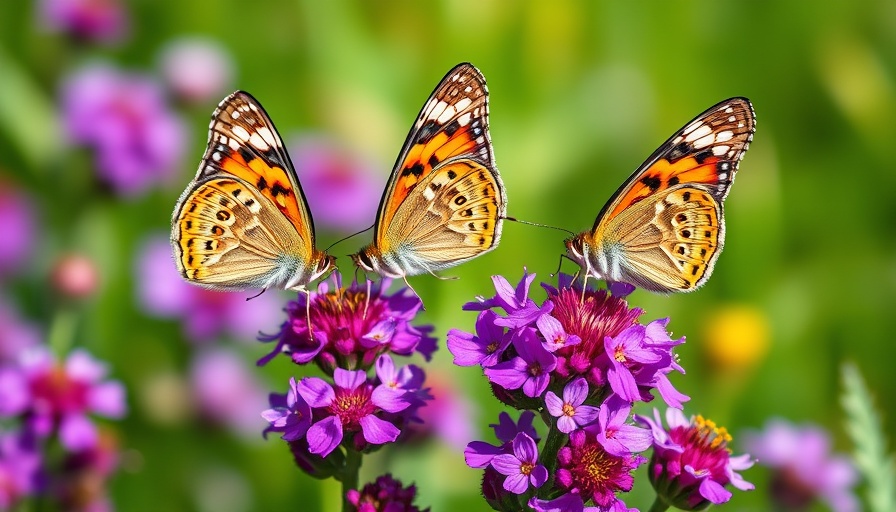
Hope Emerges for Heath Fritillary Butterflies
A brighter future seems on the horizon for the threatened heath fritillary butterfly (Melitaea athalia) in England. This spring and summer have heralded a remarkable resurgence of these delicate creatures, especially in Exmoor, where conservation efforts have started to show promising results. Reports indicate that approximately 1,000 heath fritillaries were sighted on the National Trust’s Holnicote Estate, a significant increase from 600 in 2024.
Understanding the Resurgence Through Improved Conditions
Experts attribute this boost primarily to a sunnier spring and enhanced habitat management. Jenny Plackett, a conservation manager with Butterfly Conservation, expressed her excitement about the resurgence. "It’s wonderful to see such strong numbers of Heath Fritillary on Exmoor this year," she noted, highlighting how the butterflies emerged weeks ahead of their usual schedule. This increase is not only a cause for celebration but also marks the return to locations where these butterflies had vanished since the 1990s.
Conservation Efforts Making a Difference
The decline of heath fritillary butterflies has been dramatic; from a troubling 90% reduction in population between 1981 and 2019, they reached a brink of extinction that alarmed conservationists. Collaborative measures, including habitat improvement strategies involving controlled grazing and vegetation management, have contributed substantially to their recovery. These actions create sunnier, more suitable environments that support breeding and feeding behaviors.
Climate Concerns: An Uncertain Future
However, not all news surrounding this population increase is positive. The early emergence of these butterflies has raised alarms among conservationists. Basil Stow, a ranger with the National Trust, cautioned that changing weather patterns could disrupt their life cycles. "The early emergence is a mixed blessing," he warned, emphasizing the delicate balance of natural ecosystems and the unpredictable nature of climate change. It’s a poignant reminder of how climate extremes can threaten even regions that are closely monitored and managed.
The Wider Implications for Biodiversity
This situation serves as a crucial point of discussion for those involved in sustainability and eco-conscious hospitality. Boutique hospitality professionals can draw parallels between these butterflies' plight and their own efforts toward promoting biodiversity in their operations. Implementing chaos gardening—an approach that focuses on creating diverse ecosystems within garden spaces—can foster habitats for local wildlife while enhancing natural beauty. Such practices are imperative in maintaining ecological balance.
Action Steps for Hospitality Professionals
As stewards of their environments, boutique hospitality professionals have the opportunity to engage their guests in climate awareness. By creating nature reserves or partnering with local conservation groups, they can educate visitors about the importance of protecting indigenous species while cultivating a sustainable existence.
In conclusion, the promising rise in heath fritillary butterflies offers a glimpse of hope and progress in conservation efforts, yet it also highlights the fragility of nature within our changing climate. By stepping up their commitment to sustainable practices, hospitality professionals can play an essential role in protecting both the butterflies and their habitats for future generations. With their influence and resources, they can stimulate awareness about existing challenges and solutions in preserving nature.
It's crucial for all of us to learn about these developments and consider how we can contribute to a healthier ecosystem. Together, we can impact the protection of endangered species and foster a deeper connection to our environment.
 Add Row
Add Row  Add
Add 




Write A Comment